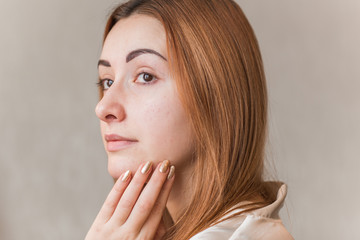Alopecia Areata
What is alopecia areata?
Alopecia areata (AA) is an autoimmune disease in which the body attacks its own hair follicles, resulting in hair loss; although the cause of alopecia areata is unknown, a person’s genetic makeup combined with other factors triggers hair loss. AA occurs worldwide, in every ethnic group and in both males and females.
What are the symptoms?
AA usually begins with small, round, coin-sized bare patches where hair normally grows. It is most common on the scalp but can involve any area of the body which grows hair. The possibility of full hair re-growth is always present. Associated symptoms are rare, but there may be minor discomfort or itching before a new patch of hair falls out. Finger and toenails may have tiny dents and can become distorted due to AA.
How is the diagnosis confirmed?
Your doctor can usually tell upon examination if you have alopecia areata. However, a scalp biopsy can also be performed to rule out other causes of hair loss and confirm the diagnosis of alopecia areata.
What are the treatment options?
There is no cure for alopecia areata. Hair often regrows on its own. Treatment can help the hair regrow more quickly. A dermatologist may prescribe one or more of the following to help the hair regrow more quickly:
Corticosteroids: This medicine suppresses the immune system. It can be given as shots, with the dermatologist injecting the medicine into the places with hair loss. Sometimes a patient gets a topical (applied to the skin) form of this medicine. It may be a cream, lotion, or ointment. The patient applies the medicine to the bare spots.
Injections: For adults with alopecia areata, these shots are often the first treatment tried. Patients receive shots every 6 weeks. Hair growth begins about 4 weeks after the last shot. Sometimes, it takes longer.
Topical corticosteroids are less effective than shots. This is often the best treatment for children.
Corticosteroid pills can have serious side effects. Dermatologists do not routinely prescribe them for this reason. Pills may be a treatment choice for patients with many bald spots.
Topical minoxidil 5% solution: Rogaine is an over-the-counter topical solution containing minoxidil, which can help to promote hair regrowth.





